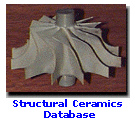A substantial effort has been made to select data for this database on the basis of sound scientific judgment. However, the National Institute of Standards and Technology (NIST) makes no warranties regarding its use, and NIST shall not be liable for any damage that may result from errors or omissions in the database.
Certain trade names and other commercial designations are used in this work for the purpose of clarity. In no case does such identification imply endorsement by the National Institute of Standards and Technology, nor does it imply that products or services so identified are necessarily the best available for the purpose.
How are data evaluated?
Scientific and technical data may be examined from three viewpoints:
The description of data generation is crucial. The identification and control of all relevant independent variables must be addressed and demonstrated. For mature areas such as thermodynamics and atomic physics, many measurement techniques are well characterized. In these cases, the adherence to physical laws and intercomparisons predominate. For areas in which behavior is not well understood, such as corrosion, data from different experiments are not usually comparable. Consequently, documentation of control of the experimental condition is most important.
The NIST WWW Structural Ceramics Database (WebSCD) provides evaluated materials property data for a wide range of advanced ceramics known variously as structural ceramics, engineering ceramics, and fine ceramics. These materials tend to have low mass densities and high strengths and tend to be resistant to corrosion. These characteristics form the basis for applications of these materials in high-temperature, energy-efficient heat exchangers, advanced engine designs, bearings, wear resistant parts, and stable electronic substrates and electronic packaging.
The range of materials covers the major series of compounds derived from the ceramic oxide, carbide, nitride, boride, and oxynitride chemical families. The materials are described by specification and characterization information that includes processing details and chemical compositions. Physical characteristics such as density and crystal structure are given in numeric tables. All measured values are evaluated and supported by descriptions of the measurement methods, procedures, and conditions. In all cases, the sources of the data are fully documented in a detailed bibliography.
A Guide to the proper citation of data from this site
NIST Structural Ceramics Database (SCD) Database, NIST Standard Reference Database Number 30, , National Institute of Standards and Technology, Gaithersburg MD, 20899 (2015), doi:10.18434/T4F30D, (retrieved [date of access]).
NIST Standard Reference Database 30
Last Update to Data Content: 2002
